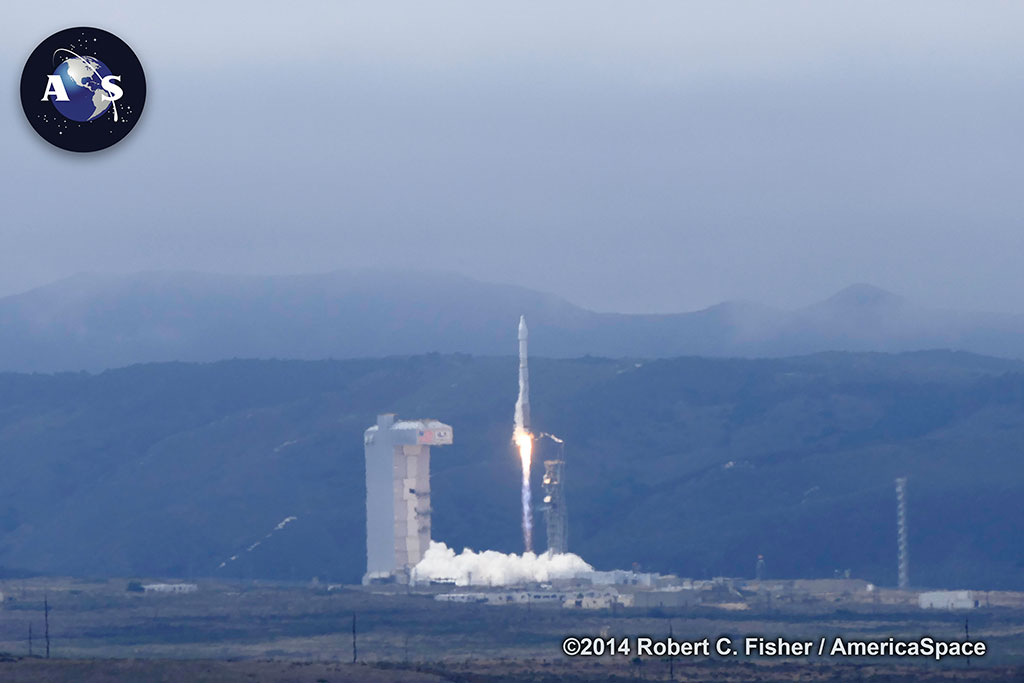
Flying for a third time in less than three weeks, its second Atlas V in only 12 days and its tenth overall mission of 2014, United Launch Alliance (ULA) has successfully boosted DigitalGlobe’s WorldView-3 satellite into a Sun-synchronous orbit, some 383 miles (617 km) above Earth. Liftoff of the Atlas V—which flew in its “401” configuration, numerically designated to describe a 13-foot-diameter (4-meter) payload fairing, no strap-on rocket boosters, and a single-engine Centaur upper stage—took place precisely on time at 11:30:30 a.m. PDT Wednesday, 13 August, from Space Launch Complex (SLC)-3E at Vandenberg Air Force Base, Calif. All ascent milestones proceeded with exceptional smoothness, and WorldView-3 was delivered perfectly into orbit about 19 minutes after liftoff. It will spend at least seven years acquiring “superspectral” Earth imagery at resolutions never previously attainable for commercial users.
Following the encapsulation of WorldView-3 into its two-piece (or “bisector”) payload fairing on 26 July, and integration with the Atlas V, the entire vehicle stood an impressive 196 feet (60 meters) in height. Weather at Vandenberg on Tuesday night seemed iffy, with forecasters predicting only a 40 percent likelihood of acceptable conditions. Their primary concern centered on clouds below 2,000 feet (600 meters), which threatened to breach Launch Commit Criteria. However, Wednesday dawned fine, and at 7:15 a.m. PDT the giant Mobile Service Tower (MST) was retracted from the vehicle. The first of two built-in holds in the countdown occurred at T-2 hours, and at 9:30 a.m. ULA Launch Conductor Edward Johansen completed his final poll of all stations, then issued a formal “Go” to commence fueling the Atlas V Common Core Booster (CCB) and the Centaur upper stage with liquid oxygen, cryogenically cooled to -183 degrees Celsius (-297 degrees Fahrenheit).
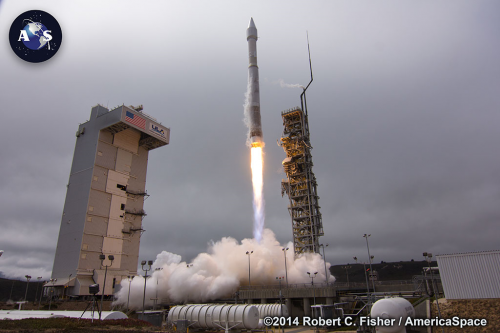
By now, the weather outlook had brightened markedly, with AmericaSpace’s Launch Tracker noting at 9:42 a.m. that conditions at Vandenberg were sunny, with light winds of about 8 knots and a temperature of 20 degrees Celsius (68 degrees Fahrenheit). By 10:50 a.m., the propellant tanks were full and the liquid oxygen had transitioned to a “topping” mode, whereby the boiled-off cryogens were continuously replenished until close to launch time. At 11:14 a.m., the final balloon data indicated perfect conditions, with a 100 percent likelihood of acceptable weather at T-0.
The final, variable-duration hold in the countdown occurred at T-4 minutes, during which time all launch controllers were polled for the final time for their “Go-No Go” status. With a short, 15-minute “window”—extending from 11:30 a.m. until 11:45 a.m.—their existed precious little leeway in the timeline, should problems occur. In the wake of this final poll, which produced a string of “Go” calls from all stations, Mr. Johansen issued a formal “Go for Launch” at 11:25 a.m. and gave permission to begin the terminal countdown. Shortly thereafter, the clock resumed ticking from T-4 minutes. Under its auspices, the Atlas V autosequencer assumed primary command of all vehicle critical functions through liftoff. The Flight Termination System (FTS), which would destroy the rocket in the event of a major accident during ascent, was brought online and armed at 11:27 a.m. Liquid oxygen replenishment concluded, fuel and oxidizer valves were closed for flight, and the propellant tanks were verified at Flight Pressure.
“Range is Green!” came the encouraging Western Range report at T-1 minute.
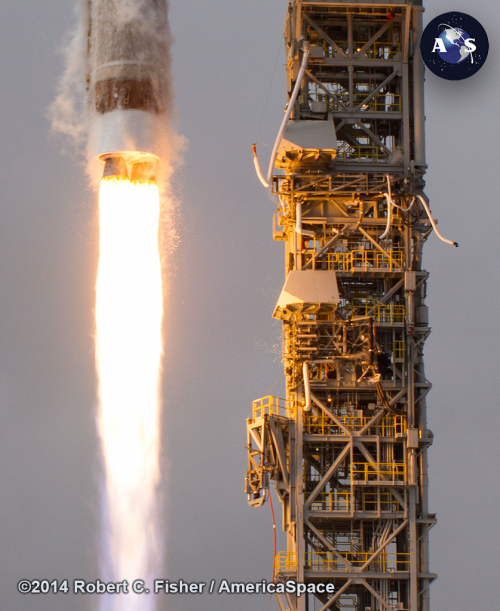
At T-25 seconds, the crisp triplet of calls familiar to all Atlas V launch watchers echoed across the airwaves, denoting the status of the booster, its upper stage, and its payload—“Go Atlas! Go Centaur! Go WorldView-3!”—as the final phase of the countdown ticked away. At T-5 seconds, sound-suppressing water flooded the SLC-3E pad surface and into the flame trench, in order to minimize reflected energy and acoustic waves at the moment of liftoff. The ignition sequence got underway at T-2.7 seconds, when the Atlas V’s single, Russian-built RD-180 engine, powered by liquid oxygen and a highly refined form of rocket-grade kerosene, known as “RP-1,” rumbled to life. Punching out 860,000 pounds (390,000 kg) of thrust, the vehicle lifted off precisely on the opening of the window at 11:30:30 a.m.
Momentarily disappearing into a cloud deck, seconds into the flight, the Atlas—whose thrust-to-weight ratio is only 1:16—seemed to lumber away from SLC-3E and away from the mountain-ringed launch site, climbing vertically for its first 16 seconds of flight. At this point, the Centaur’s avionics commanded a pitch, roll, and yaw program maneuver to actively guide the stack onto the proper flight azimuth to insert WorldView-3 satellite into its Sun-synchronous orbit of 383 miles (617 km). By a half-minute into the ascent, it entered Closed Loop Guidance Control. “This provides feedback from instruments on the rocket to ensure that it continues on the correct path during this section of the flight,” explained the Launch Tracker. At this time, the Atlas transitioned to Zero Angle of Attack flight mode, flying a pre-programmed attitude which had been calculated based on upper-level winds before launch.
By 85 seconds into the flight, the vehicle had gone supersonic, heading toward its second most critical ascent milestone after liftoff: “Maximum Dynamic Pressure,” colloquially known as “Max Q,” at which point the airframe was placed under the greatest amount of aerodynamic stress. The Atlas passed smoothly through Max Q, and the RD-180 engine continued to burn hot and hard, finally shutting down at 11:34:35 a.m. PDT, just over four minutes after departing Vandenberg. A few seconds passed, then the CCB separated from the vehicle, leaving the Centaur in charge of the final push to deliver WorldView-3 into orbit. Fueled with a mixture of liquid oxygen and hydrogen, the Centaur’s electronic brain had been busy in the final seconds, “chilling-down” its fuel lines, ahead of the ignition of its 22,300-pound-thrust (10,100 kg) RL-10A engine at T+4 minutes and 20 seconds.
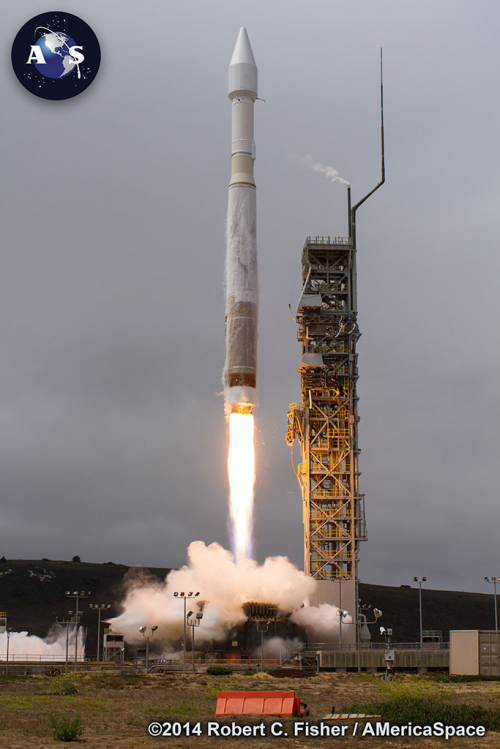
Capable of restarting in flight, the Centaur was tasked with just a single “burn” on this mission. During this period, the two-piece (“bisector”) payload fairing was jettisoned, exposing WorldView-3 to the space environment for the first time. “The satellite is now exposed,” noted the Launch Tracker, “but the thin atmosphere on the remaining trip to orbit poses no threat to the spacecraft.” After just 12 minutes, the Centaur engine shut down at 11:47 a.m. Shortly afterward, at 11:49:40 a.m., WorldView-3 separated from its upper stage to begin the complex process of unfurling its electricity-generating solar arrays and other appendages. The Centaur, meanwhile, executed a number of avoidance maneuvers to eliminate the risk of a collision and ensure a safe destructive re-entry.
As described in AmericaSpace’s WorldView-3 preview article, WorldView-3 and its owner—the Longmont, Colo.-based DigitalGlobe—represents the most powerful “superspectral” Earth imaging satellite for commercial purposes ever placed into orbit. Capable of acquiring imagery at resolutions of 12.2 inches (31 cm) panchromatic and 4 feet (1.24 meters) multispectral, WorldView-3 is expected to benefit from a recent U.S. Department of Commerce authorization, which legally entitles DigitalGlobe to collect and sell commercial imagery as fine as 10 inches (25 cm) panchromatic and 3.3 feet (1 meter) multispectral by the early part of 2015.
The satellite’s relatively low orbit of 383 miles (617 km) is roughly equivalent to the distance between Southern California’s Hollywood sign and the Golden Gate Bridge in San Francisco. “If the imagery were located at the Hollywood sign,” DigitalGlobe noted on its blog, “users would be able to count all of the people on the Golden Gate Bridge.” In addition to its remarkable imaging capabilities, WorldView-3 will have the capability to revisit the same ground sites at least once per day and can cover over 260,000 square miles (680,000 square km) in each 24-hour period. Its advanced Control Moment Gyroscopes (CMGs) also permit it to be reoriented over a desired imaging spot in just 4-5 seconds, as opposed to the 30-45 seconds needed by traditional reaction wheels. A 12-band Cloud, Aerosol, Water Vapor, Ice and Snow (CAVIS) instrument will also allow the satellite to automatically correct its images for atmospheric effects, such as haze, soot, dust, and other contaminants.
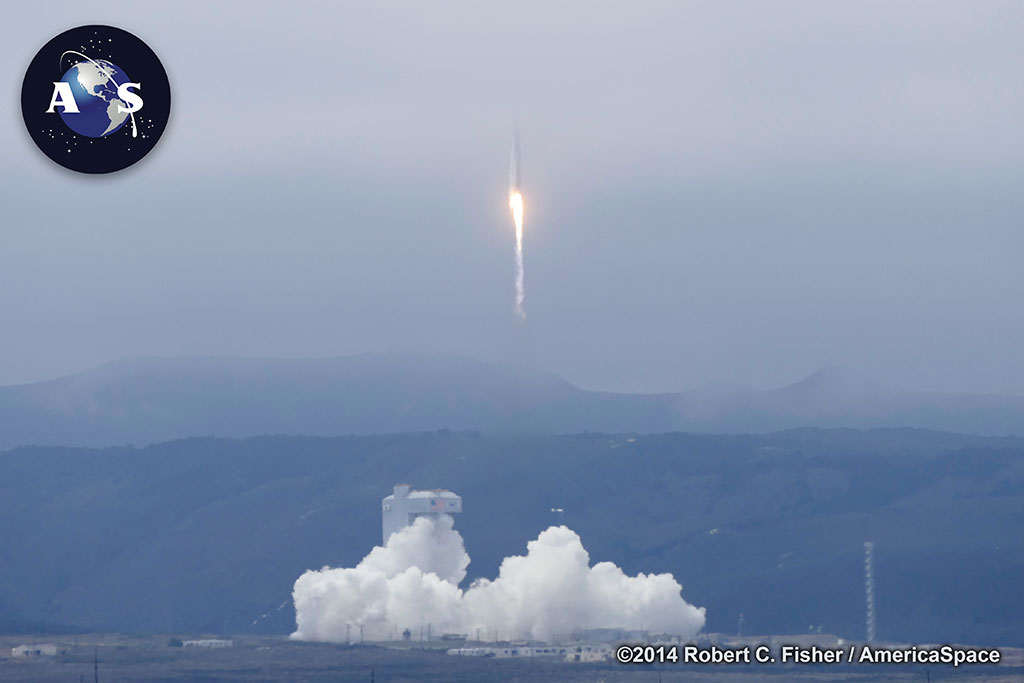
Wednesday’s launch of the WorldView-3 mission represents the 10th of 15 planned flights by ULA in an action-packed 2014. To date, the Centennial, Colo.-based launch services provider—formed in December 2006 between Boeing and Lockheed Martin—has delivered payloads into orbit on behalf of NASA and the U.S. military. These have included NASA’s latest Tracking and Data Relay Satellite (TDRS) in January and the second Orbiting Carbon Observatory (OCO-2) in July, together with a Defense Meteorological Satelllite Program (DMSP) in April, two classified National Reconnaissance Office (NRO) payloads in April and May, the long-delayed Air Force Space Command (AFSPC)-4 mission in July, and no less than three Global Positioning System (GPS) Block IIF satellites in February, May, and most recently on 1 August. Following Wednesday’s scheduled launch of WorldView-3, ULA anticipates lofting the top-secret CLIO mission in September, another GPS Block IIF satellite in October, the Soil Moisture Active Passive (SMAP) spacecraft in November, and, in the first half of December, another classified NRO payload and the long-awaited Exploration Flight Test (EFT)-1 of NASA’s Orion spacecraft.
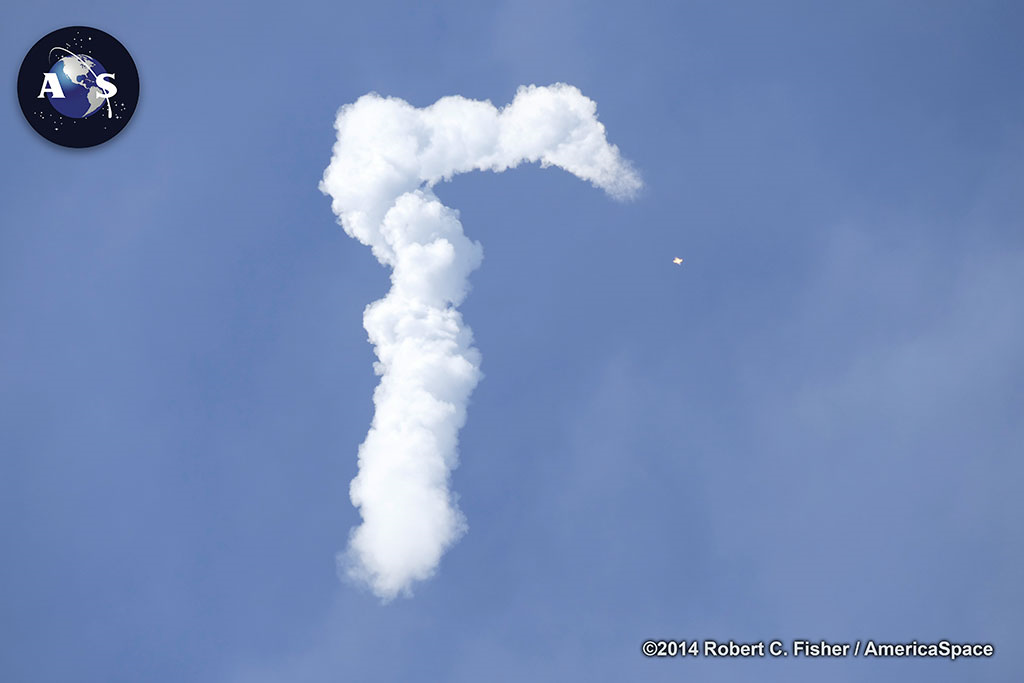
Want to keep up-to-date with all things space? Be sure to “Like” AmericaSpace on Facebook and follow us on Twitter: @AmericaSpace
Missions » WorldView 3 »


